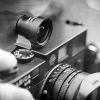What do you think - no difference between digital and analog?!
-
Recently Browsing 0 members
- No registered users viewing this page.
-
Similar Content
-
- 8 replies
- 1,388 views
-
- 9 replies
- 316 views
-
- 97 replies
- 9,020 views
-
- 44 replies
- 3,637 views
-
- 14 replies
- 835 views
-





Recommended Posts
Join the conversation
You can post now and register later. If you have an account, sign in now to post with your account.
Note: Your post will require moderator approval before it will be visible.